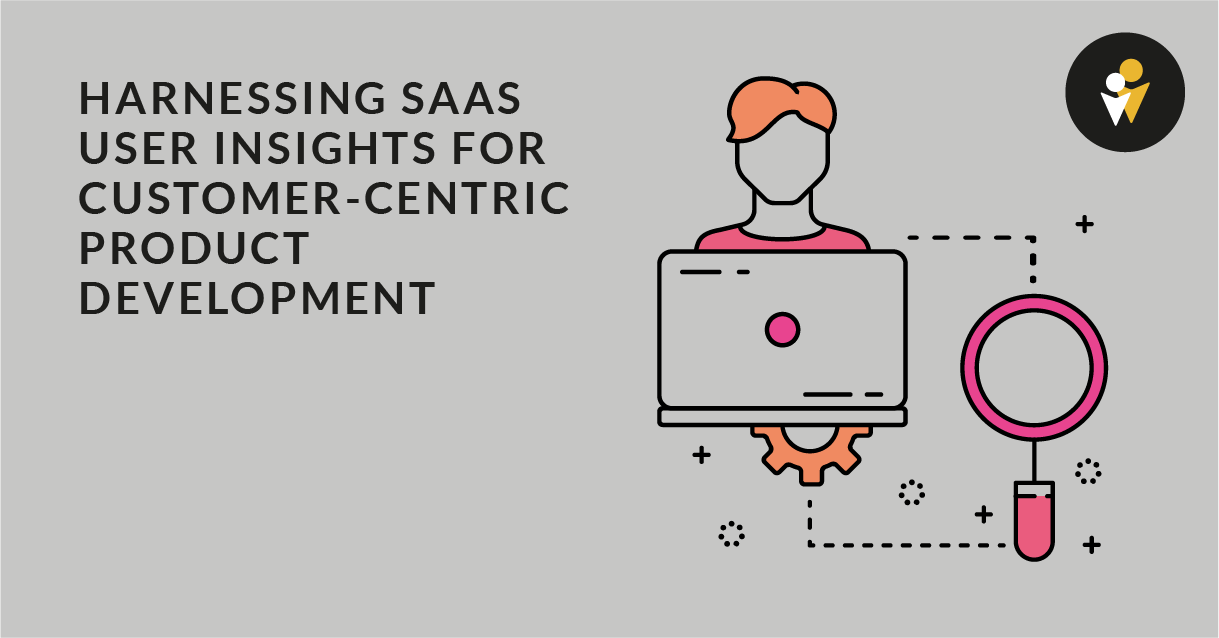Customer-centric product development is essential for the success of any SaaS business. By prioritizing user needs and preferences, companies can ensure their products not only resonate with their target audience but also foster long-term loyalty.
However, gathering and acting on customer feedback often presents challenges such as data overload, unclear priorities, and gaps in implementation. Developing a continuous product development feedback loop is key to addressing these challenges, driving product innovation, and consistently improving user satisfaction.
This blog explores practical strategies for leveraging customer insights to create impactful, customer-focused products—and the organizational mindset required to succeed.
The Value of Customer Feedback in Product Development
Incorporating customer feedback into the product development process offers numerous benefits. Listening to your users enables:
- Enhanced Product Relevance: Understanding user needs leads to features and updates that better serve your audience.
- Market Opportunity Identification: Feedback highlights unmet needs, gaps in the market, and opportunities for growth.
- Reduced Risk: Validating ideas with customer insights minimizes costly missteps during development.
Take Slack, for example. Originally developed as an internal tool for a gaming company, Slack evolved into a widely adopted communication platform by actively listening to user feedback. Specific pain points—like the need for integrations, user-friendly design, and seamless collaboration—drove its continuous updates and feature rollouts. By addressing these needs, Slack built both brand loyalty and a product that attracted a broader audience.
Understanding how users engage with your product is essential for making informed improvements. By analyzing SaaS user behavior patterns, businesses can identify brand advocates and opportunities for deeper customer engagement. Learn more about how behavior analysis can drive advocacy in our guide on SaaS User Behavior Analysis & Brand Advocacy.

Effective Methods for Gathering Customer Insights
Surveys and Questionnaires
Surveys and questionnaires are effective tools for collecting structured feedback. Businesses can conduct:
- Customer Satisfaction Surveys: Customer satisfaction surveys measure how satisfied customers are with a product or service. Businesses use the insights from this type of survey to identify areas for improvement.
- Feature Feedback Surveys: This type of survey focuses on specific features of a product or service based on usability, effectiveness, and user needs. Insights help identify ideas for improvement and new developments.
- Net Promoter Score (NPS): NPS surveys evaluate customer loyalty. This is accomplished by asking respondents how likely they are to recommend your business’s product to others. NPS surveys provide insights into customer sentiment and growth opportunities.
When creating survey questions, it’s important to:
- Use clear, jargon-free language.
- Mix question types (e.g., multiple choice, open-ended).
- Keep surveys short to respect respondents' time.
- Pilot test surveys with a small group to catch issues before wider distribution.
There are several tools that can help with survey creation and distribution. Qualtrics, Google Forms, and SurveyMonkey make survey creation and distribution simple and efficient.
Customer Interviews
One-on-one customer interviews provide deeper insights than surveys. Interviews allow for in-depth understanding of behaviors and motivations, real-time interactions, relationship building, and qualitative data. This way of collecting insights fosters conversation and trust with respondents.
Here are some quick tips to conduct an effective interview:
- Prepare a discussion guide with key topics and questions to cover.
- Select participants with a mix of perspectives (demographics, user segments, etc.).
- Create a comfortable environment that will encourage open and honest discussion.
- Avoid leading questions by framing questions in a neutral, unbiased manner.
- Listen actively and foster natural conversation.
For example, an e-commerce SaaS company might discover through interviews that users struggle with a particular checkout step—leading to a redesign that improves conversions.
Usability Testing
Usability testing helps evaluate how users interact with your product in real-world scenarios. Observing actual user behavior uncovers usability challenges, preferences, and unexpected friction points.
There are two methods of usability testing:
- Remote Testing: Broaden your audience by conducting virtual tests.
- In-Person Testing: Gather immediate, detailed feedback in controlled environments.
To conduct a usability test effectively, make sure to:
- Define clear objectives for the test.
- Create tasks that mimic real-world product use.
- Record sessions to analyze results later.
For example, testing a new feature with a small group of users before launch can reveal bugs or confusing design elements—saving time and resources in the long run.
Social Listening
Social listening involves monitoring social media platforms to understand how users perceive your product. This strategy provides real-time insights into user sentiment, preferences, and concerns.
Here are some effective strategies for social listening:
- Use social listening tools (Hootsuite, Sprout Social, Brandwatch, etc.) to track keywords and phrases related to your brand.
- Set up alerts to notify you when your brand or products are mentioned.
- Engage with customers by responding to comments, questions, and reviews.
- Monitor relevant hashtags associated with your brand, products, and industry.
Using these tips and tools for social listening allows you to compile feedback from multiple platforms at once. In addition, social listening tools track trends and compare your brand’s performance against competitors.
Part of social listening is engaging with customers on social media. Responding to customer feedback builds trust and loyalty, encourages engagement, addresses concerns and ideas, and provides immediate insight into user needs.
Beyond monitoring customer sentiment, businesses can actively encourage and amplify user-generated content (UGC) as part of their feedback loop. Customers who share their experiences online provide authentic insights that can shape product development and increase brand trust. Discover how to harness UGC in your SaaS marketing strategy in our blog, Leveraging User-Generated Content for SaaS Growth.

Analyzing and Acting on Customer Feedback for Product Development
Collecting feedback is only half the battle. To drive customer-centric product development, businesses must:
- Analyze Feedback: Identify recurring themes and prioritize insights based on user impact and implementation feasibility.
- Create Feedback Loops: Close the loop by communicating changes back to users, demonstrating that their input matters.
- Monitor Outcomes: Track the performance of updates and iterate as needed.
For example, a project management SaaS tool might notice that users frequently request an integration with a popular calendar app. By prioritizing this request and releasing the integration, the company satisfies current users and attracts new ones.
Building a Customer-Centric Culture
A truly customer-centric approach requires a mindset shift across your entire organization. Here’s how to foster a culture that prioritizes user needs:
- Engage Employees: Hold feedback sessions and cross-department workshops to involve teams in the customer feedback process.
- Incentivize Innovation: Encourage employees to share ideas for improving the user experience.
- Align Values: Embed customer-centric principles into your company’s mission and training programs.
Amazon’s customer-obsessed culture serves as a prime example. By prioritizing customer needs in every decision, Amazon has built a reputation for unparalleled user satisfaction.
A strong customer-centric culture extends beyond product development—it shapes your brand identity. Maintaining a consistent brand voice that aligns with customer expectations helps reinforce trust and engagement. If you're looking to refine your messaging, check out our insights on how to create a brand voice.
Embrace Customer Feedback for Lasting Product Development Success
Customer-centric product development is the key to long-term SaaS success. By implementing a continuous feedback loop, businesses can:
- Regularly collect and analyze user insights.
- Prioritize features and updates based on customer needs.
- Foster a culture of innovation and collaboration.
Start leveraging customer feedback today to drive product innovation, enhance user satisfaction, and build a loyal customer base that champions your brand.













